Meet Lima Bean!
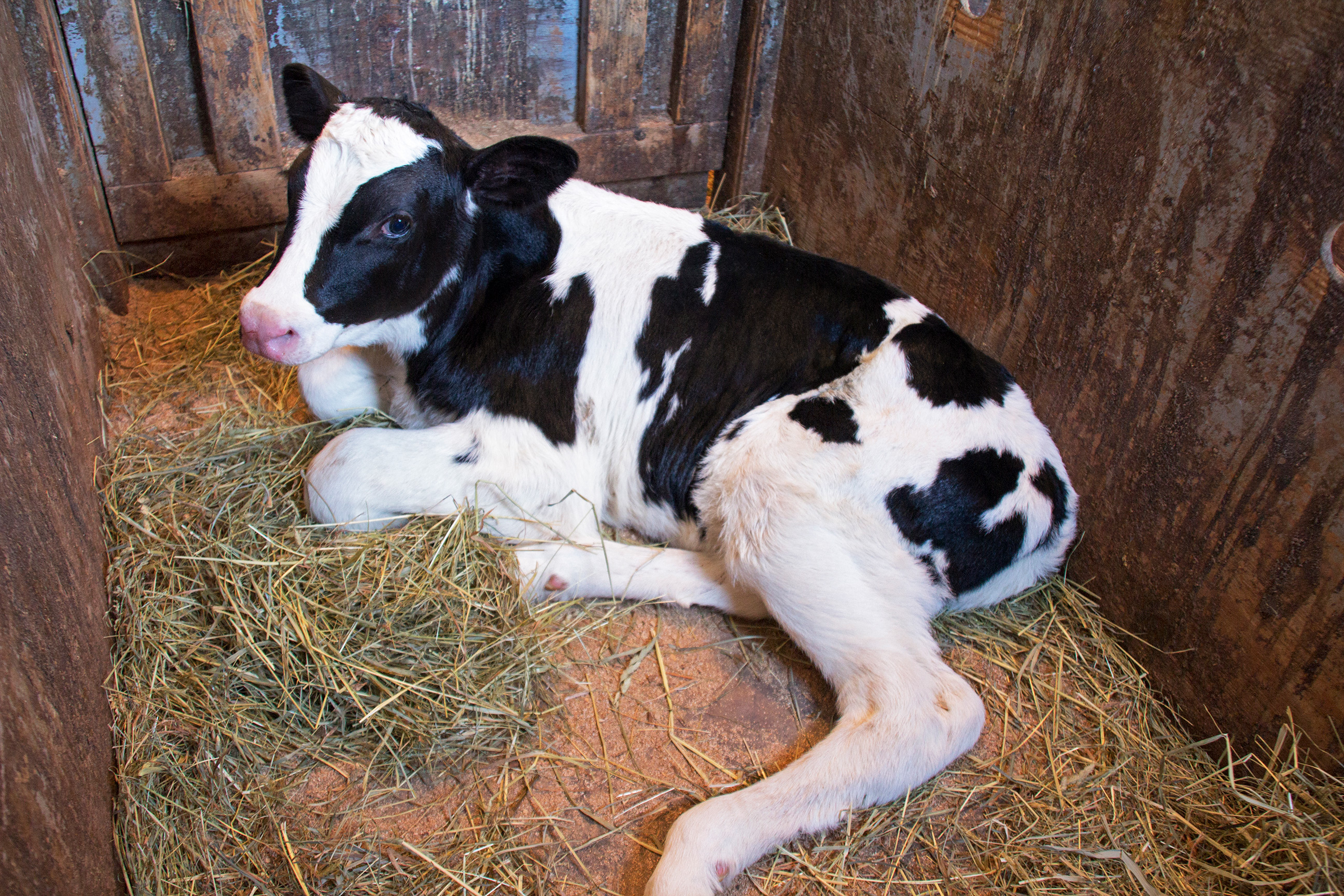
Lima Bean was born one March morning on a nearby dairy farm to a black-and-white Holstein cow named Lima. The Nottermanns like to name their calves and thought that since his mama was named Lima, Lima Bean would be the perfect name for him.
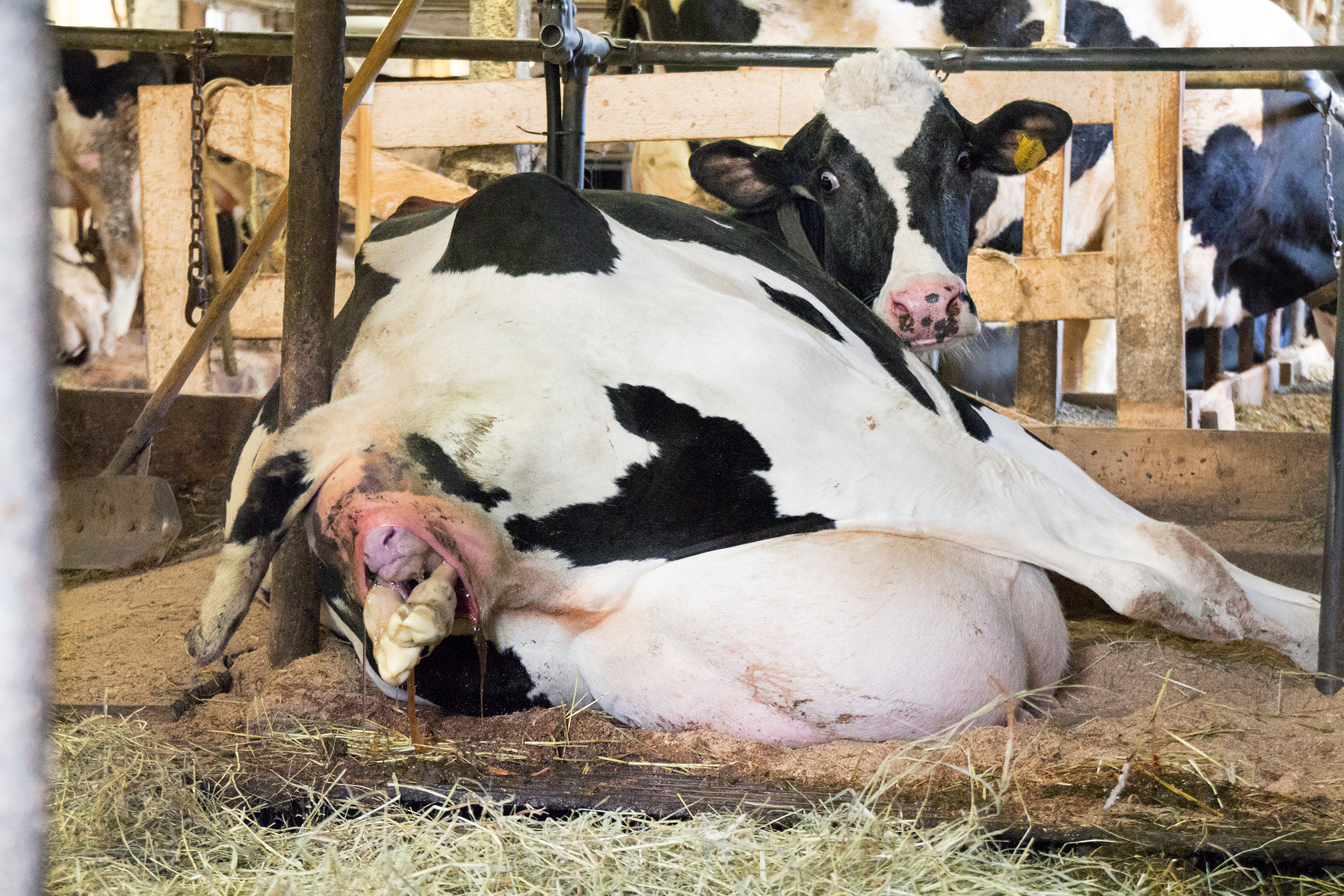
Lima, the mother cow, went into labor after being pregnant for 274 days—only six days shorter than an average human pregnancy. Like humans, calves are born headfirst; unlike humans, they nestle their two front feet alongside their head, and their feet and head come out at the same time. Mama Lima looks a bit surprised about what is going on.
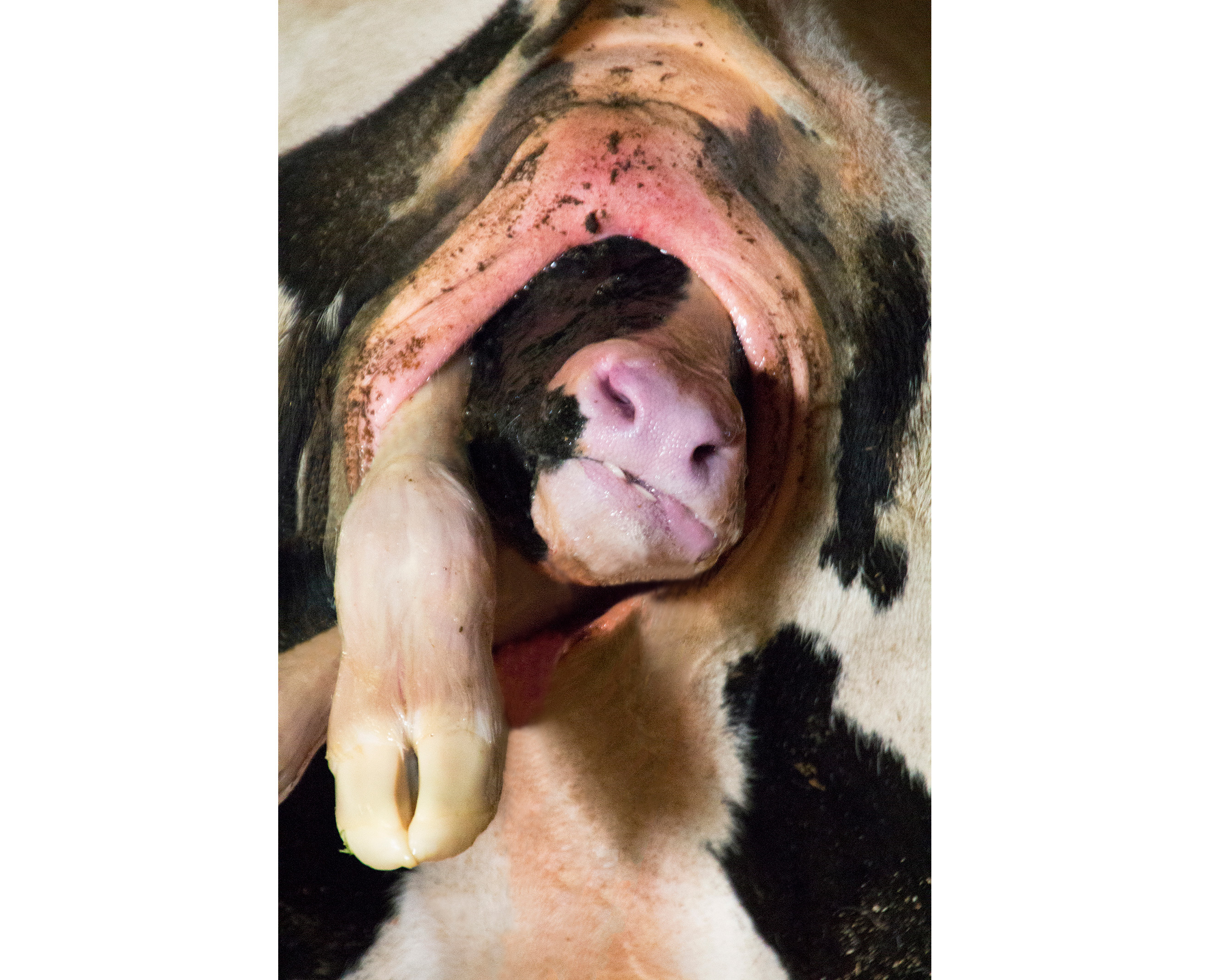
Look at Lima Bean’s head and feet coming out at the same time!
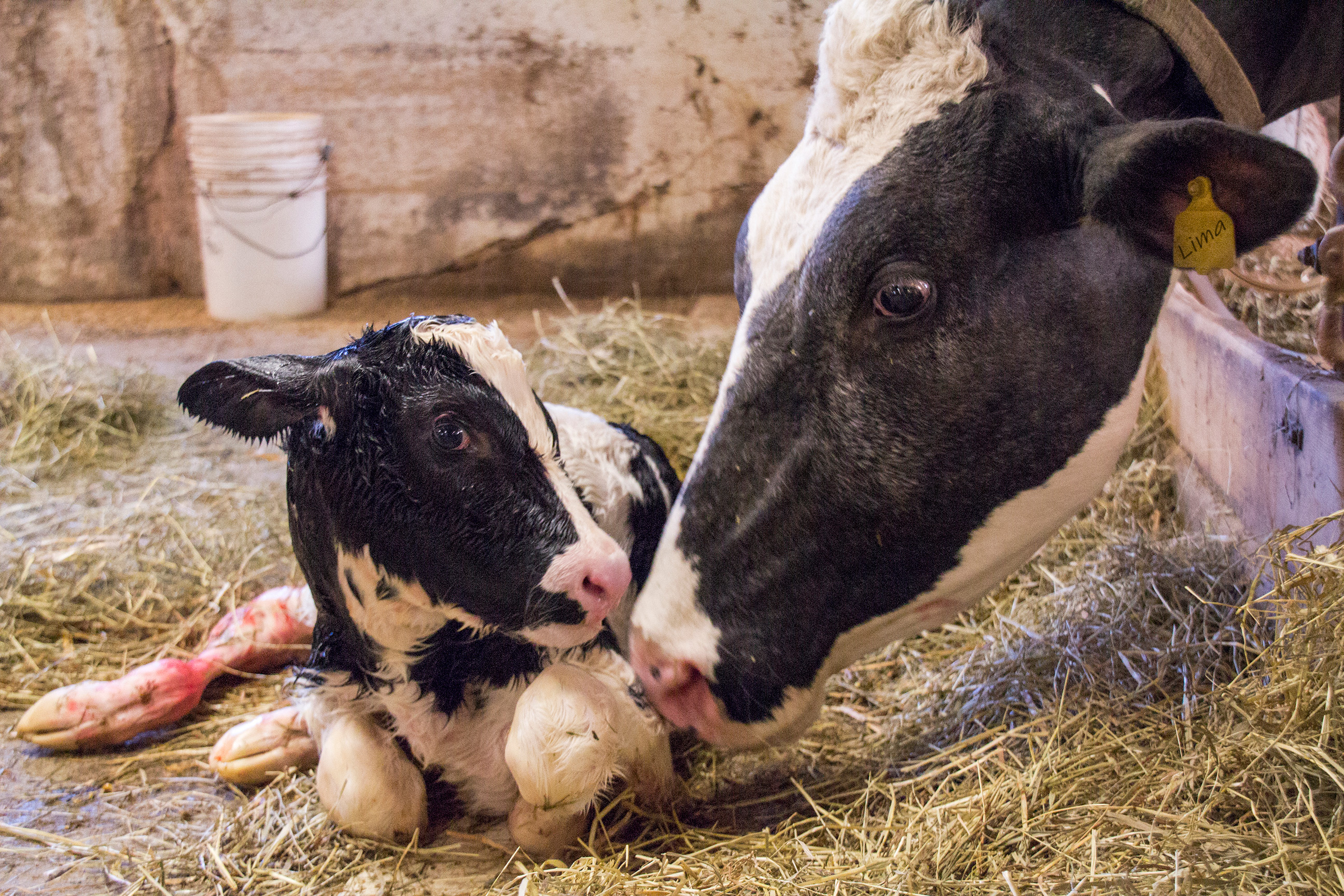
Once Lima Bean’s head and front feet are born, the rest of him slides out easily. Lima Bean’s mama immediately licks him all over with her rough tongue to dry him off, fluff up his fur, and help him start breathing on his own.
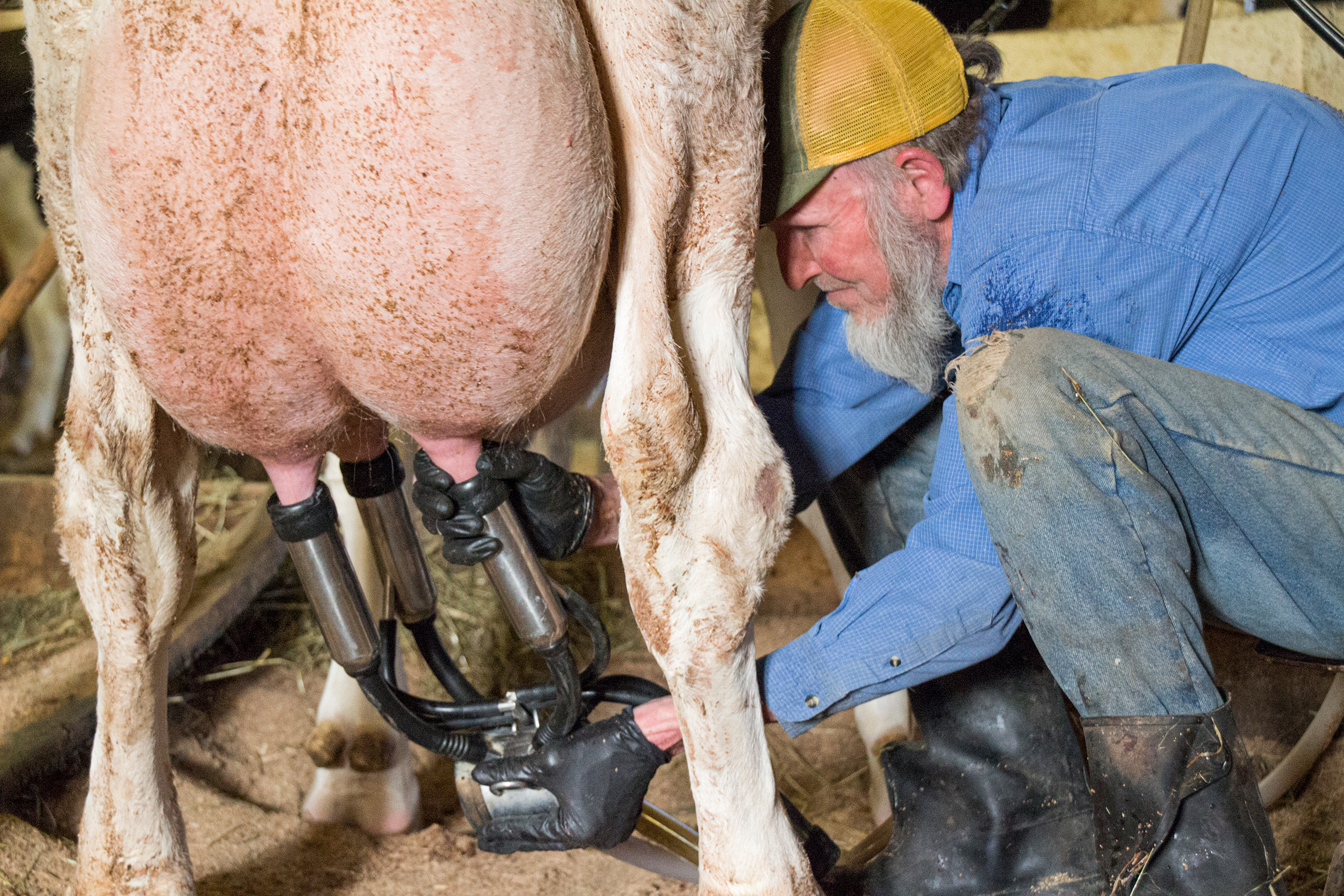
Right away, farmer Phil milks Lima for her colostrum and feeds it to Lima Bean in a bottle. Colostrum is a special kind of milk made by all mammals (including humans) when babies are first born; it helps to keep them safe from germs. How? Colostrum is full of antibodies that the mother has developed against germs and diseases to which she has been exposed. By drinking the colostrum, Lima Bean gains some of Lima’s germ protection, which will help keep him healthy.
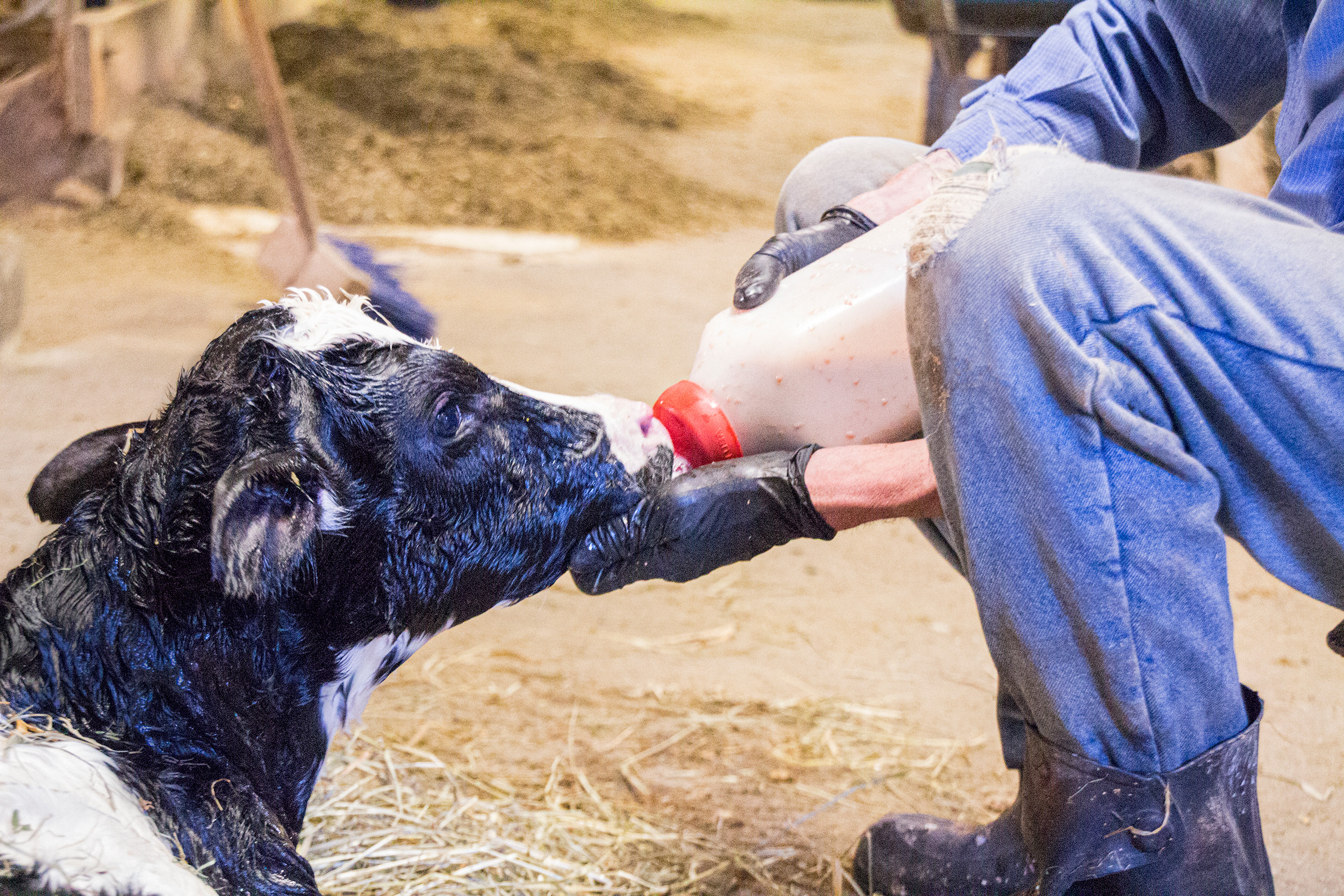
After a cow gives birth, her body makes milk. She produces the greatest amount of milk in the months right after the birth of a calf, and then her supply gradually decreases. Dairy farmers want as much milk as possible: they breed their cows each year, because only the birth of a calf can start the cow's milk-production cycle. As a result, many calves are born on dairy farms each year.
Female calves (also known as heifers) will grow up to join the dairy herd. However, male calves (baby bulls), like Lima Bean, are not kept by dairy farmers since they can’t give milk. Typically, bull calves are sent away on slaughter trucks when they are one or two days old.
Every spring when calves are born, my farmer friends, Nancy, Helm, and Ben, buy baby bull calves from their dairy farm neighbors and raise them on Snug Valley Farm. When the Nottermanns choose a bull calf to raise for meat, they give that calf two more years of life than he would have had otherwise.
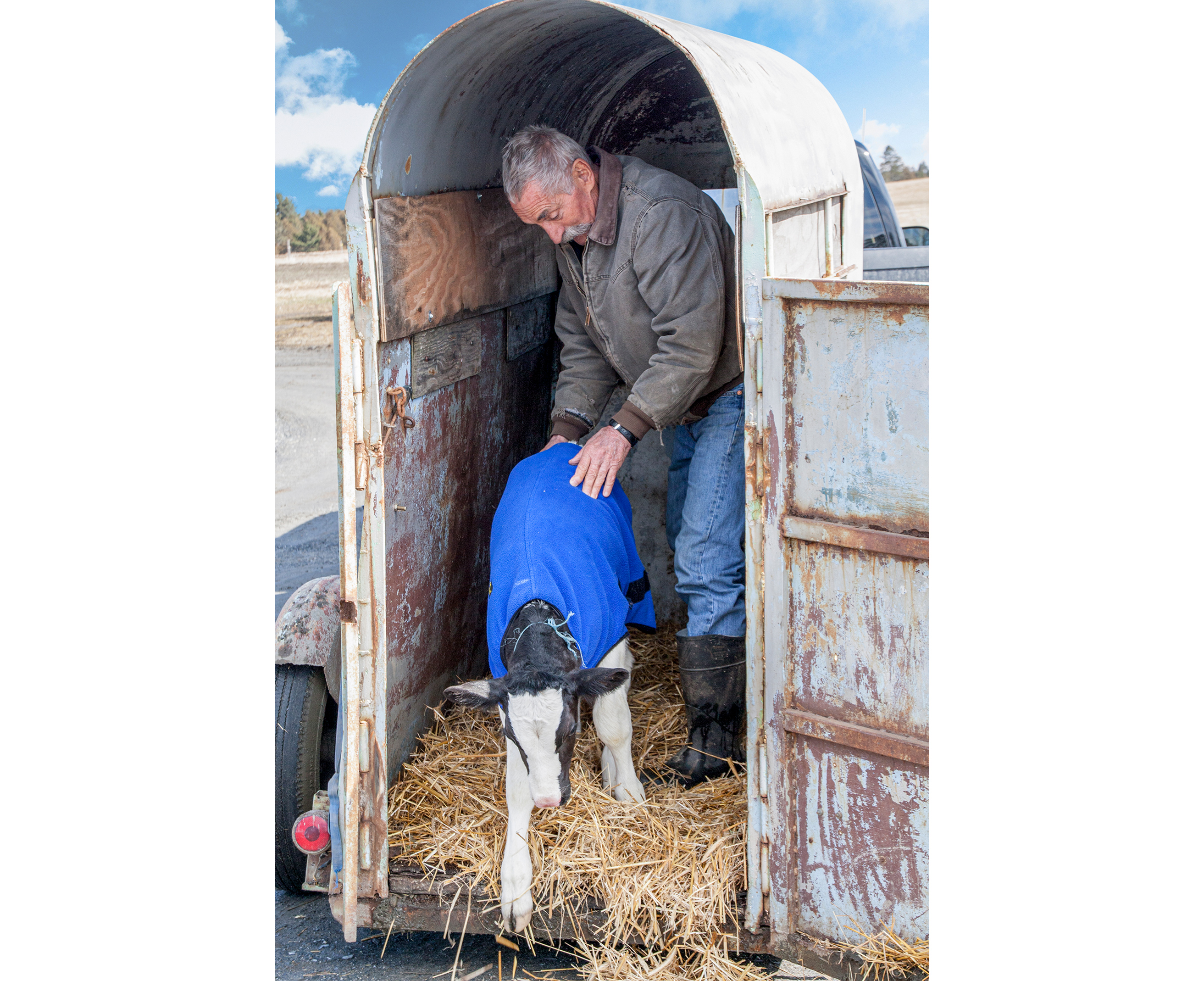
When Lima Bean is two days old and strong enough to be moved, Nancy and Helm load him into their calf trailer and bring him to their farm. The first thing they do is give Lima Bean a fleece jacket to keep him warm. Young calves like to be warm and comfy, so they wear their jackets when it is cold. Calves are less likely to get sick if their bodies don’t have to work hard to stay warm.
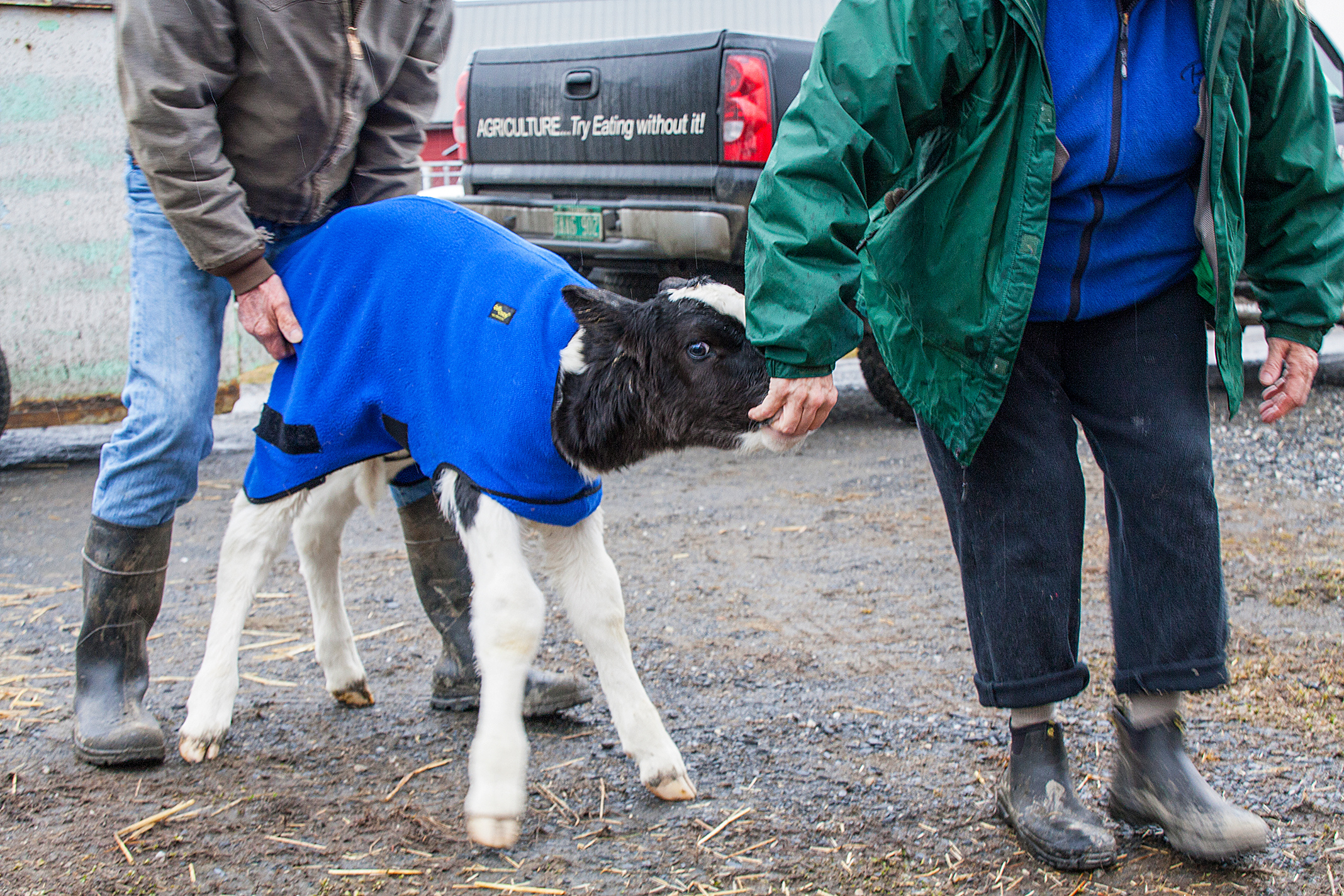
Just like human babies, calves are born with a strong urge to suck. Nancy uses this instinct to encourage Lima Bean to walk into the barn. She lets him suck on her fingers while she takes a step forward. To keep her fingers in his mouth, Lima Bean steps forward as well. Step by step they move toward the barn.
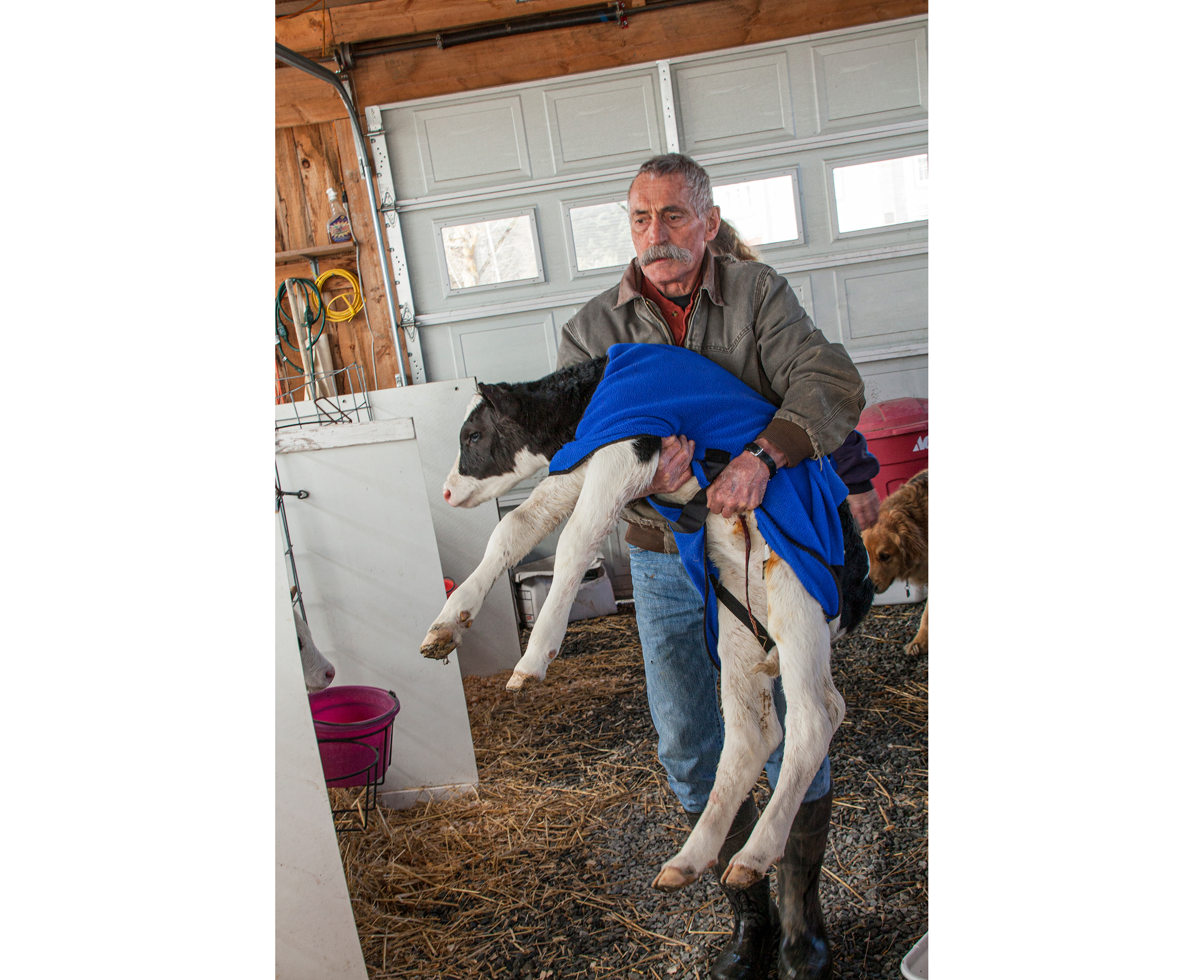
Eventually, Lima Bean gets tired and Helm carries him the rest of the way.
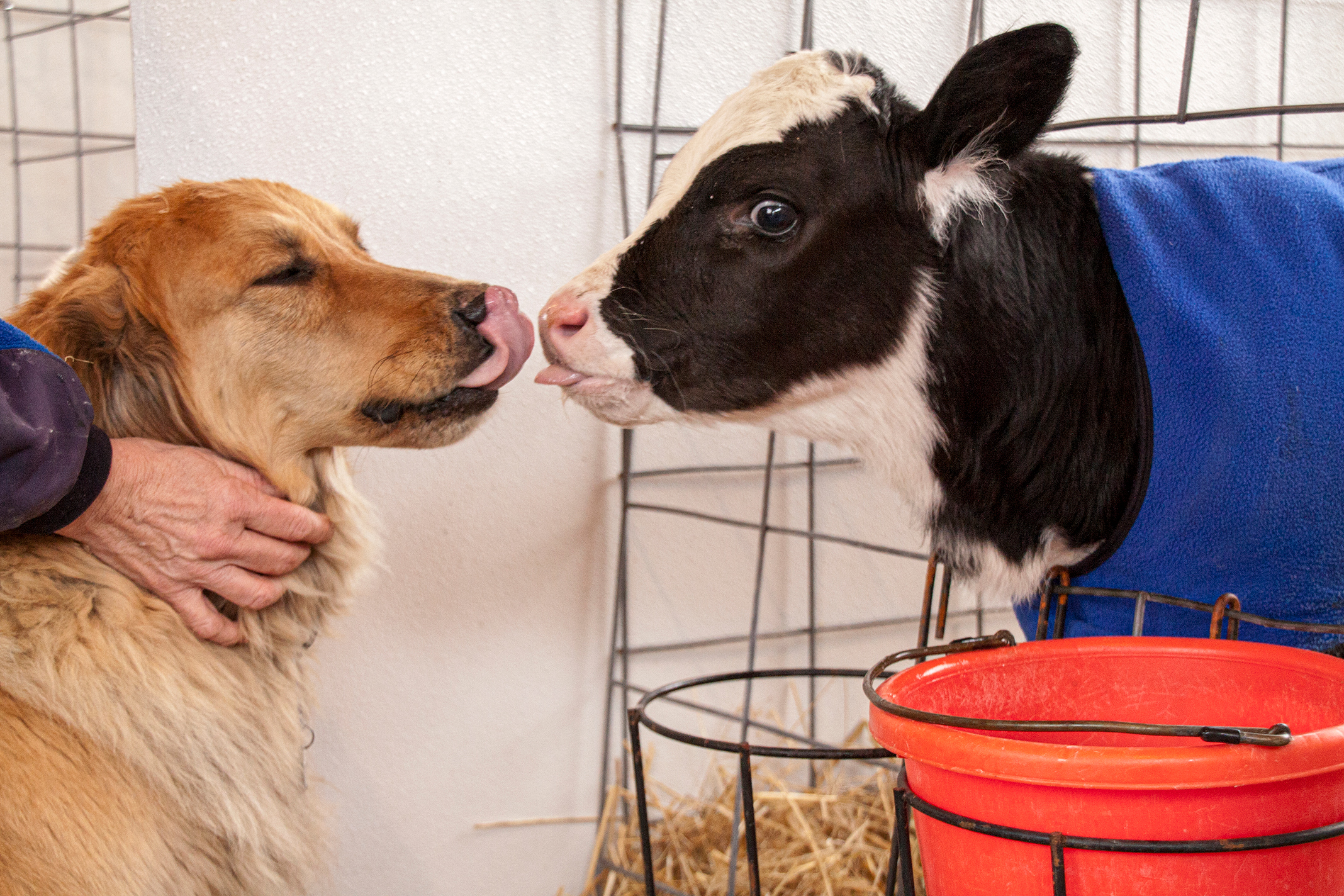
Skidder, one of the farm dogs, likes to greet all the new calves and welcome them to his farm. Here, he is giving Lima Bean a lick on the nose.